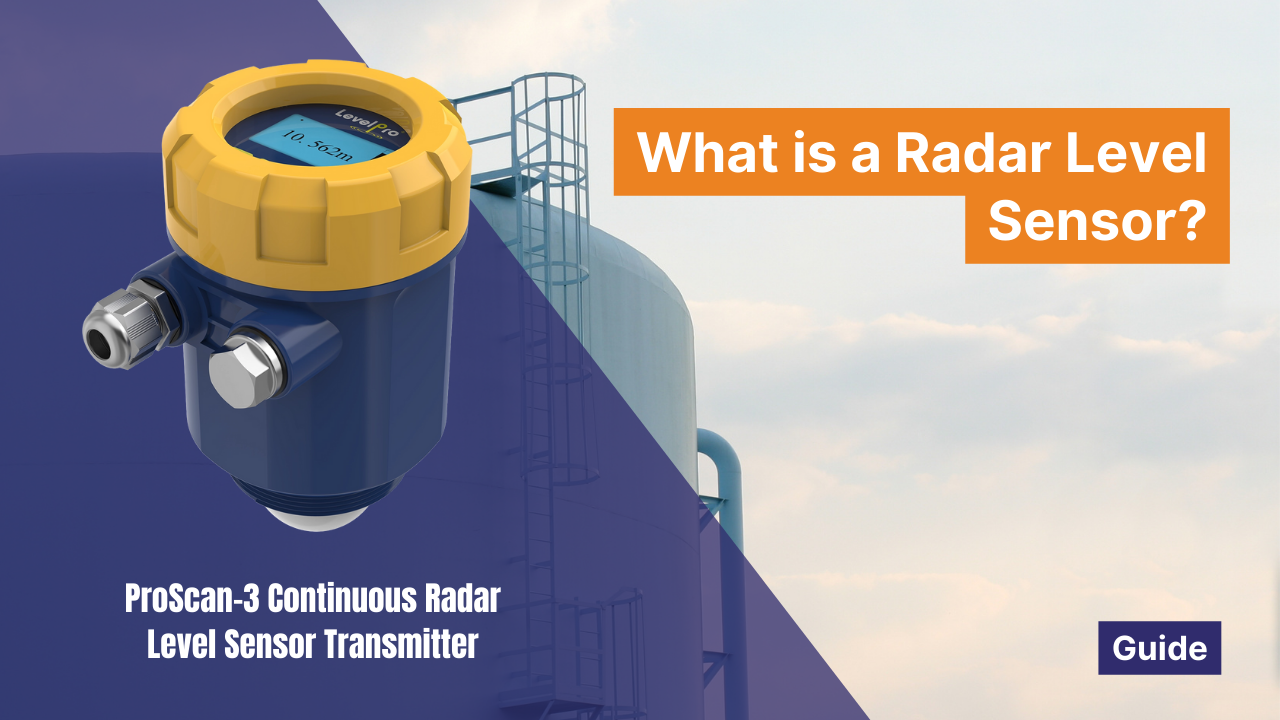
What is a Radar Level Sensor?
The efficiency and safety of processes often hinge upon accurately gauging the levels of liquids, solids, or slurries within containers or tanks. Enter radar level sensors, a sophisticated solution revolutionising how industries monitor and manage material levels. But what exactly is a radar level sensor, and how does it operate?
A radar level sensor functions on the principle of emitting microwave signals towards the material surface and subsequently capturing the reflected signals. By analysing the time taken for these signals to return to the sensor, known as time of flight, the device accurately calculates the distance to the material surface. This precise measurement facilitates the determination of the material's level within the container.
Unlike traditional methods that may suffer from inaccuracies or environmental limitations, radar technology offers unparalleled precision, making it an invaluable asset across diverse industrial sectors.
Benefits of Radar Level Sensors
Radar level sensors stand out among their counterparts due to many advantages that cater to the demanding needs of modern industries. One of the most noteworthy advantages is their unmatched accuracy, often achieving millimeter-level precision. This precision ensures that critical processes reliant on precise level measurements operate seamlessly, minimising the risk of errors or inefficiencies.
Moreover, radar level sensors operate non-contact, eliminating the need for direct interaction with the material being measured. This non-invasive approach not only enhances safety but also preserves the integrity of the material, particularly in sensitive or hazardous environments. Additionally, these sensors boast a robust design capable of withstanding extreme temperatures, pressures, and harsh conditions commonly encountered in industrial settings. Such durability ensures reliable performance even in the most challenging operational environments, enhancing efficiency and longevity.
Applications of Radar Level Sensors
The versatility of radar level sensors renders them indispensable across various industrial applications. Whether measuring the level of liquid chemicals in a processing plant, monitoring the volume of bulk solids in a storage silo, or gauging the consistency of slurries in a wastewater treatment facility, radar sensors offer a universal solution. Their adaptability to various materials and environmental conditions makes them a go-to choice for industries seeking reliable and comprehensive level measurement solutions.
Furthermore, radar level sensors find application in sectors ranging from oil and gas, chemical processing, and food and beverage to pharmaceuticals, water and wastewater management, and beyond. This widespread applicability underscores the instrumental role played by radar technology in optimising operational efficiency, ensuring regulatory compliance, and safeguarding assets and personnel across diverse industrial landscapes.
Types of Radar Level Sensors
These devices come in various types, each tailored to meet specific application requirements and environmental challenges. Common types include guided wave radar sensors, which operate on a contact basis using probes to guide the radar waves, and non-contact radar sensors, which rely on free-space radar technology for level measurement.
Guided wave radar sensors excel when direct contact with the material is feasible or necessary, such as in tanks with agitated surfaces or corrosive liquids. On the other hand, non-contact radar sensors offer versatility and convenience, making them ideal for applications involving hazardous materials or environments where physical contact is impractical or hazardous.
Advancements in Radar Level Sensor Technology
As technology continues to evolve, so too do radar level sensors. Ongoing research and development efforts aim to enhance the capabilities and performance of these devices, pushing the boundaries of what is possible in terms of precision, reliability, and functionality. Innovations such as enhanced signal processing algorithms, advanced materials for sensor construction, and integration with Internet of Things (IoT) platforms are poised to revolutionise the landscape of level measurement technology further.


